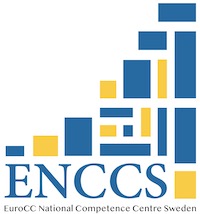Julia for high-performance data analytics#
Julia is a modern programming language that is free and open source - see https://julialang.org/ for downloads, documentation, learning resources etc. Bridging high-level interpreted and low-level compiled languages, it offers high performance (comparable to C and Fortran) without sacrificing simplicity and programming productivity (like in Python or R).
Julia has a rich ecosystem of libraries aimed towards scientific computing and a powerful builtin package manager to install and manage their dependencies. Thanks to a rapidly growing ecosystem of packages for data science and machine learning, Julia is quickly gaining ground in both academic and industrial domains which deal with large datasets.
This lesson starts with a discussion of working with data in Julia, how
to use the DataFrames.jl package and how to visualise data. It then moves
on to linear algebra approaches, followed by classical machine learning
approaches as well as deep learning methods with an example of scientific ML.
Finally, key aspects of regression,
time series prediction and analysis is covered.
If you are new to the Julia language, please make sure to go through this introductory Julia lesson before going through this HPC lesson independently or attending a workshop where it is taught.
To learn about how to accelerate, parallelise and GPU-port Julia code, please visit the lesson Julia for high-performance scientific computing.
Prerequisites
Experience in one or more programming languages.
Understanding of basic Julia syntax, best practices and development tools, corresponding to what is covered in the ENCCS Julia-intro lesson
Familiarity with basic concepts in data science techniques.
Reference
Who is the course for?#
This lesson material is targeted towards students, researchers and developers who:
are already familiar with one or more programming languages (Julia, Python, R, C/C++, Fortran, Matlab, …)
need to analyze big data or perform computationally demanding modeling or analysis
want to develop high-performance data science software but prefer to stay within a productive high-level language.
About the course#
This lesson material is developed by the EuroCC National Competence Center Sweden (ENCCS) and taught in ENCCS workshops. It is aimed at researchers and developers who want to learn a modern, high-level, high-performace programming language suitable for scientific computing, data science, machine learning and high-performance computing on CPUs or GPUs. Each lesson episode has clearly defined questions that will be addressed and includes multiple exercises along with solutions, and is therefore also useful for self-learning. The lesson material is licensed under CC-BY-4.0 and can be reused in any form (with appropriate credit) in other courses and workshops. Instructors who wish to teach this lesson can refer to the Instructor’s guide for practical advice.
Graphical and text conventions#
Different graphical elements are used to organize the material.
Type-along sections#
Type-along sections are intended for live coding where all participants type-along and appear in a separate text box ‘Todo’:
Todo
Defining a variables
This is how you set a variable in Julia:
x = 1
Exercises#
All lesson episodes (sections) end with one or more exercises for participants to practice what they’ve learned. Sometimes there’s also a solution:
Todo
Printing to screen
Which of these commands prints the value of the variable x?
print(x)println(x)write(x)
Solution
Correct answer is both 1 and 2! println() uses print() and adds a new line.
Important information#
Sometimes important information is displayed inside boxes:
Important info
Please don’t hesitate to ask questions during the workshop!
Discussion#
Discussion exercises are conducted either via voice or through a shared workshop document.
Are these instructions clear?
Discuss any questions about the lesson format either via the shared workshop document or in breakout room sessions.
See also#
Many resources for learning Julia can be found at https://julialang.org/learning/. The list includes Julia Academy courses, the Julia manual, the Julia Youtube channel, and an assortment of tutorials and books.
Julia Data Science is an open source and open access book targeting researchers from all fields of applied sciences as well as industry.
A recent talk given by Kristoffer Carlsson, developer at Julia Computing in Sweden, gives an excellent overview on using Julia for HPC.
Credits#
The lesson file structure and browsing layout is inspired by and derived from work by CodeRefinery licensed under the MIT license. We have copied and adapted most of their license text.
Several examples and formulations are inspired by other Julia lessons, particularly:
Educational prallelization/GPU-porting repository with C/C++/Fortran examples developed by CSC
Introduction to Julia provided by CSC and Aalto
Storopoli, Huijzer and Alonso (2021). Julia Data Science. ISBN: 9798489859165.
Instructional Material#
All ENCCS instructional material is made available under the Creative Commons Attribution license (CC-BY-4.0). The following is a human-readable summary of (and not a substitute for) the full legal text of the CC-BY-4.0 license. You are free:
to share - copy and redistribute the material in any medium or format
to adapt - remix, transform, and build upon the material for any purpose, even commercially.
The licensor cannot revoke these freedoms as long as you follow these license terms:
Attribution - You must give appropriate credit (mentioning that your work is derived from work that is Copyright (c) ENCCS and, where practical, linking to https://enccs.se), provide a link to the license, and indicate if changes were made. You may do so in any reasonable manner, but not in any way that suggests the licensor endorses you or your use.
No additional restrictions - You may not apply legal terms or technological measures that legally restrict others from doing anything the license permits. With the understanding that:
You do not have to comply with the license for elements of the material in the public domain or where your use is permitted by an applicable exception or limitation.
No warranties are given. The license may not give you all of the permissions necessary for your intended use. For example, other rights such as publicity, privacy, or moral rights may limit how you use the material.
Software#
Except where otherwise noted, the example programs and other software provided by ENCCS are made available under the OSI-approved MIT license.
